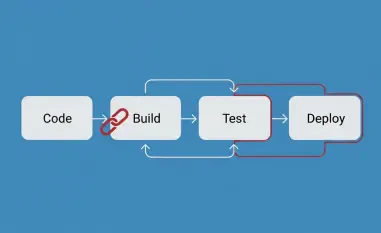In the ever-evolving landscape of cyber threats, ransomware has emerged as a particularly devastating actor, crippling systems and exacting substantial ransom payments. Anubis stands out with its rare dual-threat capability, encrypting and irrevocably wiping files upon activating its notorious ‘wipe mode.’ This mode ensures that even if victims decide to pay the ransom, there’s no hope of data recovery. First identified at the end of 2024, Anubis has targeted prolific sectors, capitalizing on vulnerabilities in healthcare, hospitality, and construction industries across multiple nations, from the U.S. to Peru. This analysis delves into Anubis’s key features, honing in on its sophisticated tactics, impact, and prospective trajectory.
Anubis Ransomware: Core Features and Techniques
Anubis ransomware is particularly infamous for its advanced ‘wipe mode,’ which goes beyond traditional encryption. Once ‘wipe mode’ is activated, data extending beyond source codes or scripts becomes permanently inaccessible, leaving victims without any recovery options post-payment. This feature amplifies the pressure on targeted entities, significantly increasing the complexity of responding to its attacks. In a landscape where backup solutions often thwart conventional ransomware, Anubis presents an unprecedented challenge to data security.
Another hallmark of Anubis is its adoption of the Ransomware-as-a-Service (RaaS) model. This business-like structure allows cybercriminal affiliates to rent the ransomware for attacks, sharing ransom profits. Affiliates enjoy a flexible revenue model: they can opt for an 80-20 split for ransom payments or engage in data extortion/access sales with varying splits of 60-40 or 50-50. This flexibility democratizes access to powerful ransomware tools, exacerbating the complexity for cybersecurity professionals tasked with mitigating these threats.
The Progression and Adaptation of Tactics
Anubis’s evolution reflects an adaptation to cybersecurity defenses and an increase in exploit sophistication. By leveraging multi-pronged attack vectors, including phishing and fake updates, Anubis paves the way for privilege escalation and file erasure operations. The ransomware’s developers, likely informed by ties to the notorious FIN7 group, have integrated tools such as the NetSupport RAT into their delivery mechanisms. This integration exemplifies their capacity to rapidly iterate and update their threat capabilities in response to changing security measures.
In light of these developments, Anubis captures the growing trend of adopting multifunctional malware in cybercriminal circles. The evolution is a testament to the group’s determination to preemptively counter new defense measures, contributing to broader trends towards innovation and long-term persistence in ransomware tactics.
Widespread Impact Across Key Sectors
Anubis’s onslaught on sectors like healthcare, hospitality, and construction isn’t incidental. These fields often possess significant volumes of sensitive data, making them prime targets. Often operating across multiple countries, including the U.S. and Australia, Anubis’s attacks leave systemic disruptions in their wake. For example, healthcare facilities grapple with potential data breaches impacting patient confidentiality and continuity of care, while construction firms contend with delays from loss of critical project data.
Such attacks tend to create ripple effects across entire networks of partners and collaborators, further amplifying the urgency to implement stronger defenses. The widespread and targeted nature of Anubis’s infiltration underscores the devastating implications for industries that hinge on data integrity and confidentiality.
Hurdles and Vulnerabilities in Implementation
Despite its formidable features, Anubis does face inherent challenges. Rapidly shifting market dynamics and increasing technical expectations pose hurdles. Cybersecurity experts continually innovate and deploy improved countermeasures, often swiftly addressing vulnerabilities that Anubis exploits. Additionally, internal missteps can lead to operational hiccups, occasionally undermining the ransomware’s efficacy.
Efforts to curtail Anubis’s advancements include tightening network security protocols and promoting public-private partnerships to share best practices. Governments are also increasingly mandating security standards to prevent and mitigate potential damages. These coordinated efforts remain crucial in slowing Anubis’s spread and effectiveness.
Prospective Directions in Ransomware Threats
Looking ahead, understanding Anubis’s evolution is key in forecasting the trajectory of ransomware threats. Emerging advancements hint at enhanced sophistication through machine learning and AI integration, potentially heralding a new era of highly-targeted attacks. As sectors expand digitization initiatives, the probability of future ransomware threats grows, necessitating a reevaluation of current cybersecurity paradigms.
Long-term, Anubis’s influence may propel an industry-wide shift towards more resilient infrastructures while fostering innovations in ransomware defense. By anticipating these advancements, stakeholders can fortify systems and mitigate future challenges, establishing robust deterrence mechanisms.
Strategic Outcomes from Anubis Evaluation
This examination of Anubis ransomware highlights the significant risk posed by dual-threat ransomware in today’s digital ecosystem. Its innovative features, such as ‘wipe mode,’ combined with a RaaS model, represent a formidable challenge for sectors reliant on data integrity. However, despite its sophisticated nature, Anubis still faces significant obstacles owing to the progressive strides in anti-ransomware strategies.
Future endeavors may involve developing systemic responses that outpace such threats, cultivating resilience, and even leading to an overhaul in industry best practices. By anticipating advancements and reinforcing cybersecurity frameworks, stakeholders can mitigate the proliferation of threats similar to Anubis, driving a safer digital landscape.













